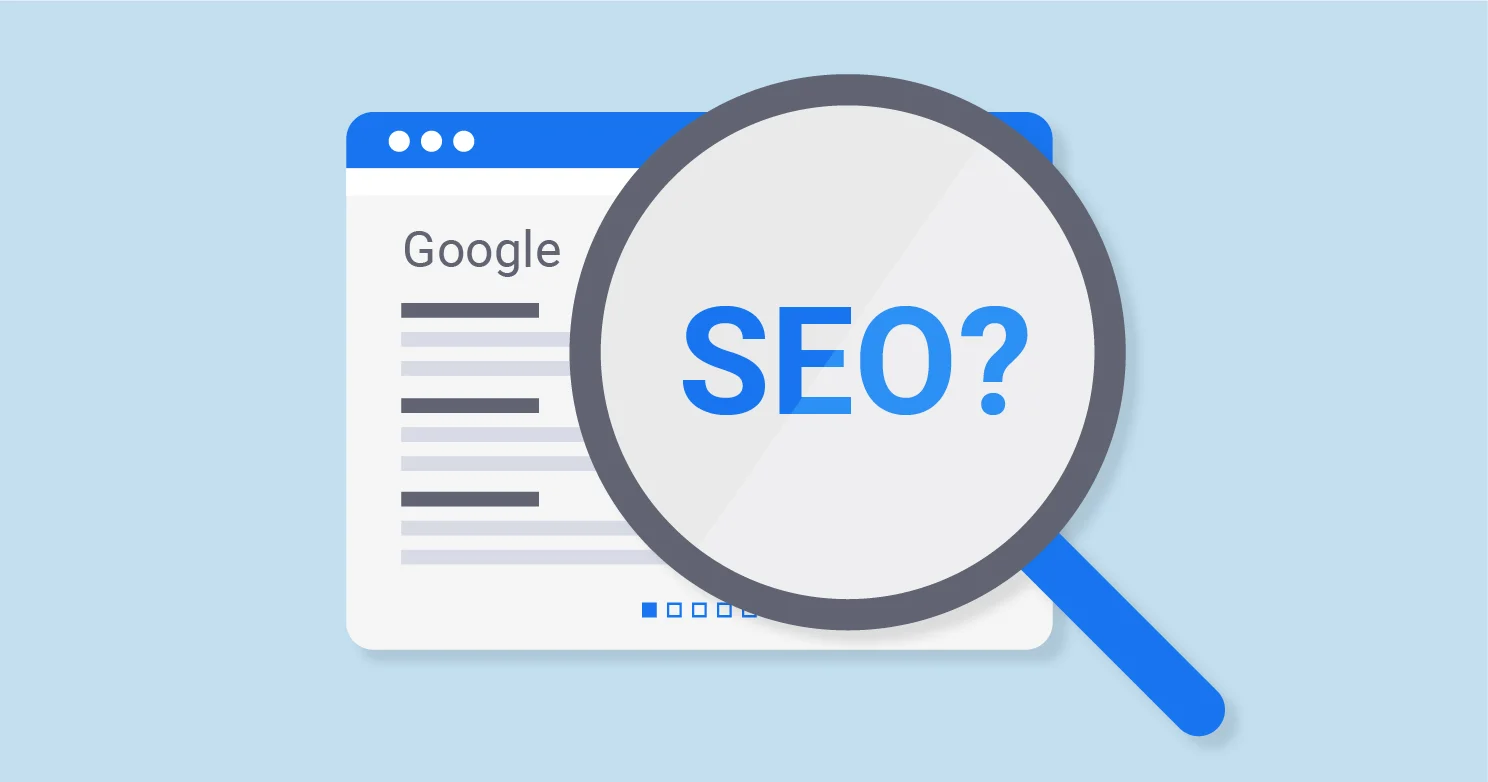Digital Marketing
What is Search Engine Marketing (SEM) | Beginners Guide 2024

In “Understanding SEM: A Comprehensive Guide,” I aim to provide you with a thorough understanding of Search Engine Marketing (SEM) by delving into its key components and strategies. Through this comprehensive blog post, I will explore the concept of SEM, its importance in today’s digital landscape, and the benefits it can bring to businesses. I will ensure that you have all the necessary information to grasp the fundamentals of SEM. Let’s start by answering the fundamental question: What is SEM?
Understanding SEM: A Comprehensive Guide
Search engine marketing (SEM) is a highly effective digital marketing strategy that allows businesses to enhance their online visibility, increase website traffic, and reach their target audience. In this comprehensive guide, I will demystify SEM, explain its importance, explore how it works, highlight its key components, discuss the benefits it offers, differentiate it from SEO, outline different types of SEM campaigns, provide tips for creating an effective SEM strategy, and point out common mistakes to avoid. By the end of this guide, you’ll have a clear understanding of SEM and how it can contribute to your online marketing success.
What is SEM?
Definition of SEM
SEM refers to a form of digital marketing that involves promoting websites by increasing their visibility in search engine result pages (SERPs) through paid advertising. SEM allows businesses to display their ads to users who are actively searching for related keywords in search engines like Google, Bing, and Yahoo.
Goals of SEM
The primary goals of SEM are to increase website traffic, improve brand awareness, generate leads, and drive conversions. By strategically targeting relevant keywords and crafting compelling ads, SEM empowers businesses to connect with their target audience when they are actively looking for products or services.
Evolution of SEM
SEM has evolved significantly over the years. In the early days, paid advertising on search engines was relatively simple and focused on bidding for ad space based on keywords. However, advancements in technology and the increasing competitiveness of online advertising have led to the development of intricate systems that consider factors like user behavior, ad relevance, and quality scores to determine ad placements and rankings.
SEM Platforms
Several platforms offer SEM services, but the most widely used and popular one is Google Ads (formerly known as Google AdWords). Google Ads provides advertisers with extensive tools and features to create, manage, and optimize their SEM campaigns. Bing Ads is another notable platform that enables businesses to run SEM campaigns on the Bing search engine.
The Importance of SEM
Increased Visibility
SEM allows businesses to achieve prominent exposure on search engine result pages. By bidding on relevant keywords, businesses can ensure their ads appear at the top or bottom of the search results, significantly increasing their visibility to potential customers.
Targeted Audience
One of the greatest advantages of SEM is the ability to reach a highly targeted audience. With SEM, businesses can select specific keywords that are relevant to their products or services, ensuring their ads are shown to users actively searching for those keywords. This targeted approach ensures that businesses are connecting with customers who are more likely to convert.
Instant Traffic
Unlike organic search engine optimization (SEO) efforts that may take time to yield results, SEM can drive instant traffic to a website. As soon as an SEM campaign is launched, businesses can start attracting visitors to their website and capitalize on immediate conversion opportunities.
Competitive Advantage
In today’s competitive digital landscape, having a strong online presence is crucial for businesses. SEM provides a competitive advantage by allowing businesses to appear above their competitors in search results and capture the attention of potential customers.
Measurable Results
One of the greatest benefits of SEM is the ability to measure and track the effectiveness of campaigns in real-time. SEM platforms provide detailed analytics and reporting tools, allowing businesses to monitor key metrics such as click-through rates, conversion rates, and return on investment (ROI). This data-driven approach empowers businesses to make data-backed decisions and optimize their campaigns for better results.
How Does SEM Work?
Keyword Research
Keywords are the foundation of SEM campaigns. Conducting thorough keyword research involves identifying the most relevant and valuable keywords for a business. This process helps businesses understand what keywords their target audience uses when searching for products or services. Keyword research tools, competitor analysis, and customer insights are crucial in identifying high-performing keywords.
Ad Auctions
When a user enters a query into a search engine, an ad auction takes place in a fraction of a second to determine which ads will be displayed. Ad auctions consider various factors, including bid amounts, ad quality, and relevance to the search query. Advertisers bid on keywords they want to target, and if their bid wins the auction, their ad gets displayed.
Ad Rank and Quality Score
Ad rank is the position of an ad on a search engine result page. Google, for instance, determines ad rank based on a combination of bid amount and quality score. Quality score is an assessment of the quality and relevance of an ad, keyword, and landing page. Advertisers with higher-quality ads and landing pages tend to have higher ad ranks, even if their bid is lower.
Budgeting and Bidding
Setting a budget for an SEM campaign is crucial to prevent overspending. Advertisers need to determine how much they are willing to spend daily on their ads. Bidding is the process of determining the maximum amount an advertiser is willing to pay for a click on their ad. Bids need to be strategically set to maximize visibility and control costs.
Ad Creation and Optimization
Crafting compelling ads that resonate with the target audience is key to SEM success. Effective ads should include relevant keywords, a clear call to action, and persuasive messaging. Continuous monitoring and optimization of ads based on performance data are necessary to improve click-through rates and conversion rates.
Ad Placement and Targeting
SEM platforms allow advertisers to control the placement and targeting of their ads. Advertisers can specify the geographic location, language, and timing for the display of their ads. Additionally, they can choose to display their ads on specific websites or within particular categories of websites through the use of display network targeting.
Key Components of SEM
Search Engine Advertising
Search engine advertising is the core component of SEM. It involves businesses bidding on keywords and displaying their ads on search engine result pages. By leveraging search engine ads, businesses can target their audience effectively and drive relevant traffic to their websites.
Keyword Selection
Keyword selection is a crucial aspect of SEM. Businesses need to identify keywords that are highly relevant to their products or services and have a significant search volume. Thorough keyword research and analysis help in identifying the best keywords to target for maximum impact.
Ad Copywriting
Creating compelling ad copy is vital for attracting users’ attention and encouraging them to click on the ads. Ad copy should be concise, persuasive, relevant, and include a clear call to action. Well-crafted ad copy can significantly impact the click-through rates and overall success of an SEM campaign.
Landing Page Optimization
A landing page is the webpage that users are directed to after clicking on an ad. Optimizing landing pages ensures that they deliver a seamless and relevant user experience. Landing pages should align with the content and messaging of the ad, have clear calls to action, and be designed for optimal conversion rates.
Conversion Tracking and Analytics
Conversion tracking allows businesses to measure the success of their SEM campaigns by tracking specific actions taken by users after clicking on an ad. Implementing conversion tracking enables businesses to track key metrics such as purchases, form submissions, or phone calls, providing valuable insights into the effectiveness of their campaigns.
Campaign Management
Managing an SEM campaign involves continuous monitoring, analysis, and optimization. Regular monitoring ensures that campaigns are running smoothly, budgets are being utilized efficiently, and ads are performing as expected. Optimization involves making data-driven adjustments to campaigns to improve performance and achieve better results.
Benefits of SEM
Increased Website Traffic
One of the primary benefits of SEM is the ability to drive a significant amount of traffic to a website. By appearing prominently in search engine results for relevant keywords, businesses can attract users who are actively seeking their products or services.
Improved Brand Awareness
SEM allows businesses to enhance their brand visibility and exposure. The more frequently users see a business’s ad in search results, the more likely they are to remember and recognize the brand. This increased brand exposure can boost brand awareness and recognition.
Higher Conversion Rates
SEM campaigns are highly targeted, ensuring that businesses connect with users who have a higher likelihood of converting into customers. By appearing in search results when users are actively searching for relevant products or services, SEM increases the chances of conversions and ultimately boosts conversion rates.
Better ROI
SEM offers a high return on investment compared to many other forms of advertising. Since SEM targets users who are already interested in a specific product or service, businesses have a greater chance of achieving a positive ROI. By continuously optimizing campaigns and monitoring performance, businesses can further improve their ROI over time.
Data-driven Decision Making
SEM provides businesses with a wealth of data and insights that can inform future marketing decisions. Through detailed analytics and reporting tools, businesses can track the performance of their campaigns, identify trends, and make data-driven decisions to improve their overall marketing strategy.
SEM vs. SEO: Understanding the Difference
Definition and Objectives
SEM and SEO are two distinct digital marketing strategies, although they both aim to increase website visibility in search engine results. SEM focuses on paid advertising, while SEO focuses on organic, non-paid strategies to improve website rankings on search engines.
Paid vs. Organic Results
In SEM, businesses pay for their ads to appear in search engine results. These ads are labeled as such and are placed at the top, bottom, or side of the organic search results. SEO, on the other hand, focuses on optimizing a website’s content, structure, and other factors to appear in the organic (non-paid) search results.
Time and Cost Factors
SEM campaigns can be implemented quickly and start driving traffic and results almost immediately. However, businesses need to allocate a budget for their SEM campaigns, as they are billed based on clicks or impressions. SEO, on the other hand, takes time to yield results, as it involves optimizing various aspects of a website and building organic authority.
Integration for Maximum Impact
While SEM and SEO are distinct strategies, they can work together synergistically to maximize a business’s online presence and visibility. By leveraging both SEM and SEO, businesses can achieve greater visibility and reach in search engine results, ensuring they are capturing both paid and organic traffic.
Types of SEM Campaigns
Search Ads
Search ads are the most common type of SEM campaigns. They appear above or alongside organic search results when users enter relevant queries in search engines. Search ads are highly targeted and allow businesses to capture the attention of users who are actively searching for specific keywords or products.
Display Ads
Display ads, or banner ads, appear on various websites within the Google Display Network or other ad networks. These ads can include images, text, videos, or rich media and are strategically placed on websites that align with the target audience’s interests and demographics.
Video Ads
Video ads are an effective way to engage users visually. They can be displayed on platforms like YouTube or within video content on partner websites. Video ads attract users’ attention and allow businesses to communicate their brand message in a captivating and interactive format.
Shopping Ads
Shopping ads are primarily used by e-commerce businesses. They appear at the top of search engine results and display product images, prices, and relevant information. Shopping ads allow users to compare products, prices, and click directly to the product pages on a business’s website.
App Ads
App ads are designed to promote mobile applications. They appear on search engines, third-party apps, or within other apps or mobile websites. App ads are an effective way to drive app downloads and increase visibility for businesses with mobile apps.
Creating an Effective SEM Strategy
Defining Goals and Objectives
Before launching an SEM campaign, it is crucial to define clear goals and objectives. Whether the goal is to drive website traffic, increase conversions, or promote a new product, clearly defining objectives will guide the entire SEM strategy.
Target Market Analysis
Conducting a thorough analysis of the target market is vital for SEM success. Understanding the demographics, interests, and search habits of the target audience allows businesses to identify the most effective keywords and tailor their ad messaging accordingly.
Keyword Research and Selection
Robust keyword research is the foundation of a successful SEM campaign. By identifying high-value keywords that have significant search volume and align with the target audience’s intent, businesses can develop targeted campaigns that drive relevant traffic.
Competitor Analysis
Analyzing the online presence and strategies of competitors is essential in determining how to differentiate an SEM campaign. By understanding what keywords competitors are targeting, the messaging they are using, and the offers they are making, businesses can identify opportunities to stand out and gain a competitive edge.
Budget Allocation
Determining an appropriate budget for an SEM campaign is critical. Businesses need to allocate their budget based on their goals, competition, and the potential return on investment. Balancing budget allocation across various keywords and campaigns can be a strategic exercise to maximize results.
Campaign Structure and Organization
Organizing an SEM campaign into logical ad groups and campaigns is essential for effective management and optimization. By grouping keywords and ads that are closely related, businesses can ensure that ad copy and landing pages are highly relevant, leading to improved ad performance.
Ad Creation and Testing
The creation of compelling and engaging ad copy is crucial for successful SEM campaigns. Experimenting with different ad variations, testing headlines, keywords, and calls to action can help identify the most effective messaging and drive better ad performance.
Landing Page Optimization
Optimizing landing pages for better user experience and improved conversion rates plays a vital role in SEM success. Ensuring that landing pages load quickly, have clear calls to action, and align with ad messaging can drastically enhance the effectiveness of an SEM campaign.
Conversion Tracking Implementation
Implementing conversion tracking enables businesses to measure the success and impact of their SEM campaigns. By tracking actions such as purchases, form submissions, or phone calls, businesses gain insights into the ROI of their campaigns and can make data-driven decisions for future optimization.
Common Mistakes to Avoid in SEM
Targeting Irrelevant Keywords
Choosing irrelevant keywords can waste budget and lead to poor campaign performance. It is crucial to conduct thorough keyword research and ensure that selected keywords are highly relevant to the target audience and align with their intent.
Poor Ad Copy and Design
Effective ads require compelling copy and engaging design. Ad copy needs to be concise, clear, and persuasive, with a strong call to action. Poorly designed ads that fail to capture attention and communicate the value proposition effectively can result in low click-through rates and performance.
Lack of Landing Page Optimization
An optimized landing page is essential to provide users with a seamless and relevant experience. Neglecting to optimize landing pages can lead to high bounce rates, low conversion rates, and wasted advertising budget. Matching ad messaging and ensuring clear calls to action are crucial for landing page optimization.
Inadequate Budget Allocation
Underestimating or misallocating budget can limit the effectiveness of an SEM campaign. Insufficient budget allocation can result in limited ad impressions, making it challenging to reach the target audience effectively. A careful analysis of competition, keyword costs, and campaign goals is vital to ensure appropriate budget allocation.
Ignoring Conversion Tracking
Tracking conversions is critical to understanding the success and ROI of SEM campaigns. Failing to implement conversion tracking hinders data-driven decision making and prevents businesses from optimizing their campaigns for better results. Implementing conversion tracking from the beginning is essential for accurate performance measurement.
Incorrect Bid Management
Bidding too high or too low can negatively impact campaign performance. Poor bid management can lead to overspending, inefficient use of budget, or limited ad visibility. Continuously monitoring and optimizing bids based on performance data is necessary to strike the right balance between maximizing visibility and controlling costs.
In conclusion, SEM is a powerful digital marketing strategy that offers businesses increased visibility, targeted audience reach, instant traffic, competitive advantage, and measurable results. By understanding how SEM works, leveraging its key components, and following best practices, businesses can create effective SEM campaigns that drive website traffic, improve brand awareness, boost conversions, and lead to a higher ROI. Avoiding common mistakes and continuously optimizing SEM efforts ensure ongoing success in this ever-evolving digital landscape.
Also Read… what is content marketing | Content Marketing Strategies for successful Blogging in 2024
Also Read… What is SEO, How Search engine optimization can help your Business.
Also Read… what is target marketing | Target Marketing Strategies beginners Guide 2024
Also Read… What is marketing mix | marketing mix Beginners Guide 2024







